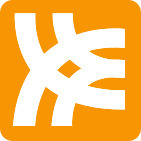This is part 3 of the series, "What is this gaming thing?" Part 1 can be found here, Part 2 can be found over here.
For this segment, rather than reminiscing, I figured it's probably a good time to explain what it is about the "Modern Boardgame" that is so interesting, and why adults and families coming together to play again.
First, let's start with the actual physical presentation of the games; one of the features of the modern boardgame is the aesthetics of the game. I have for you two photos of games--the classic game, Monopoly, and what is many a person's first foray into the modern boardgame, The Settlers of Catan (Note: click the game's name to get a larger view).
 The first things a person new to the modern boardgame
The first things a person new to the modern boardgame  often notices is the visual representation of the board, much bolder and more colorful than the classic boardgame, and the quality and number of bits that come with the game. In addition to the visual elements, the games often contain tactilely pleasent elements, that is, the parts of the game (wooden bits, cards, dice, thick cardboard chits, and even the board) are pleasent to the touch. Many of the "Eurogames" contain a number of wooden bits, while many "American-style" games may contain a number of intricately detailed plastic miniatures (don't worry about these terms, we'll come back to them later). Often this initial wow-factor was the initial source of intrigue for many veteran boardgamers.
often notices is the visual representation of the board, much bolder and more colorful than the classic boardgame, and the quality and number of bits that come with the game. In addition to the visual elements, the games often contain tactilely pleasent elements, that is, the parts of the game (wooden bits, cards, dice, thick cardboard chits, and even the board) are pleasent to the touch. Many of the "Eurogames" contain a number of wooden bits, while many "American-style" games may contain a number of intricately detailed plastic miniatures (don't worry about these terms, we'll come back to them later). Often this initial wow-factor was the initial source of intrigue for many veteran boardgamers.I had mentioned in Part 1 of this series that classic boardgames, while having a place, can become uninteresting. This is due largely to a lack of choice, very limited strategic options, and high randomness; while any one of these may be present in the modern boardgame, the extent to which it plays a role will be moderated. I'm not trying to beat on anyone's favorite game here, but let's use Monopoly as an example that everybody knows. Without recapping how Monopoly works, I'll simply state that it is restrictive in choice and strategy (ie, the dice are a larger determining factor than the player's will or intuition), has a largely static board, but does have a decent asset trading scheme.
Now let's take Settlers as an example of a modern boardgame. First, the board; while this is not always the case with the modern boardgame, the board for Settlers is modular--that is, it is made up of a series of pieces which can be interchanged in order to alter the board. Look back at the picture above, and you'll see that the board is a series of hexagons; while the ring of water does always surround the island of Catan, the 19 tiles that make up the island can be shuffled around, greatly affecting play.
Next, player choice. During the game the player will obtain resources, which they will use to expand and develop their settlements (I'll be making a post that covers Settlers soon enough). Let's say they have one of each brick, timber, wheat, and a wool resource. They could build a road with a brick and a timber, which would extend the reach of their settlements, giving them the opportunity to expand and reach other resource tiles. However, if they did that, they wouldn't be able to build another settlement--since settlements (which sit not on, but at the junctions of tiles) are what produce resources, having more enables a player to produce more resources, different resources, and they can rely on them being produced more often. Also, a player may wish to hold on to all of these, in the hopes that they receive an ore resource, enabling them to build a development card. While which resource is produced each turn is determined by the roll of two six-sided dice, how and when each resource is used is entirely up to the player. Since the value of each resource is also determined by the game and individual players, the ability to trade resources is also an interesting part of the game--for instance, a player who needs one more piece of road to block out another player may be willing to trade extra resources for that last brick they need, or perhaps grain is overproduced in the game, and thus trading it for another resource results in a 2 or 3-to-1 trade ratio.
As you can probably see from this run-down, the depth and interaction in Settlers far exceeds that of Monopoly. Now, here's an interesting piece of information--an entire game of Settlers of Catan is 60 to 90 minutes; while a game like Sorry! may only be 30 to 45 minutes, how long was your last game of Monopoly?
Since this post is getting long, I'm going to cut it short here. The series will continue with another reminiscing segment, "What is this gaming thing? Part 4 - Where did I go wrong?"




No comments:
Post a Comment